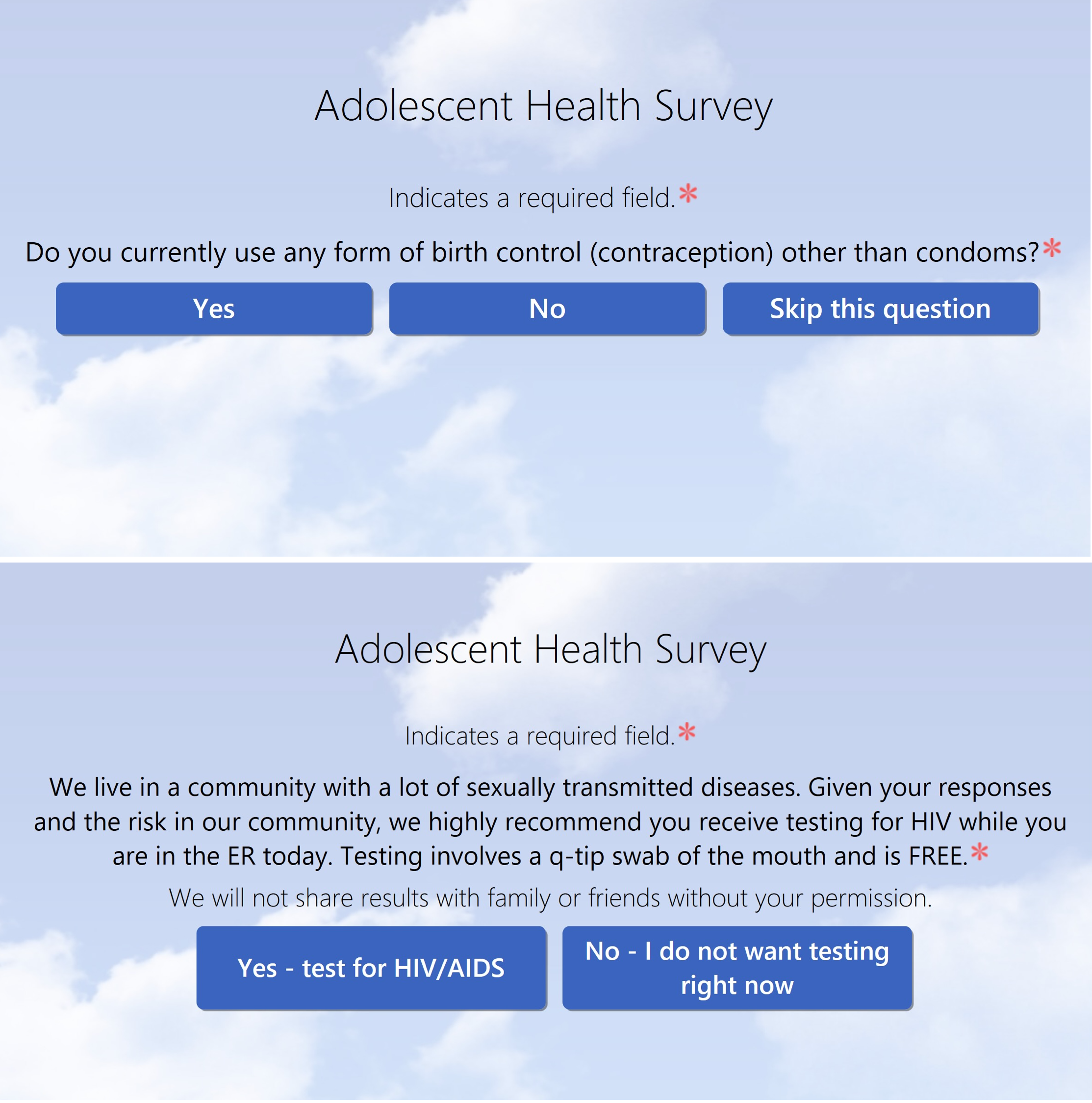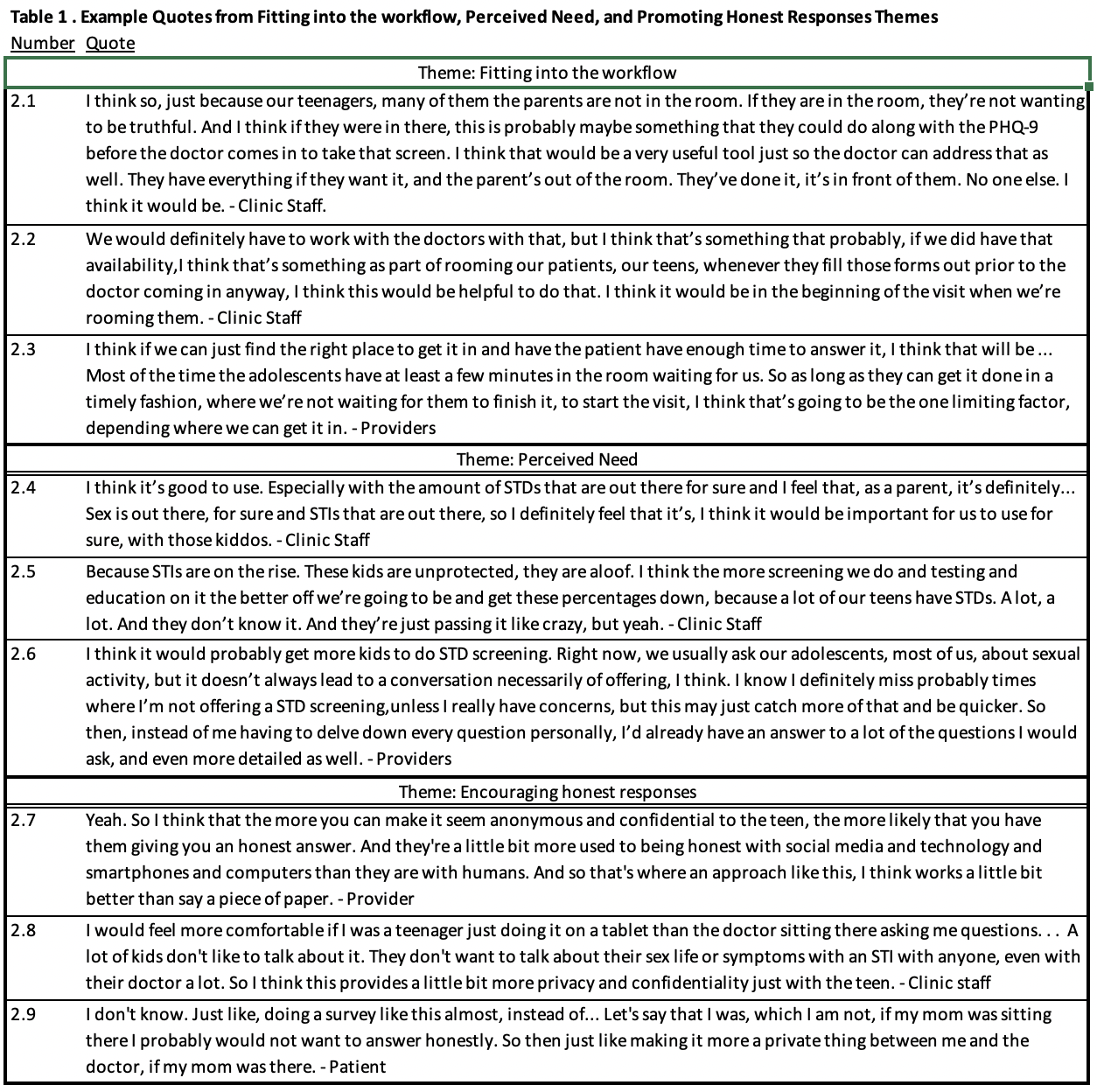General Pediatrics: Primary Care/Prevention
General Pediatrics 5
387 - Assessing Usability of an Electronic Sexually Transmitted Infection Risk Assessment Program Adapted for Use in Pediatric Primary Care
Publication Number: 387.314
- FA
Fahd A. Ahmad, MD, MSCI (he/him/his)
Associate Professor of Pediatrics
Washington University in St. Louis
St. Louis, Missouri, United States
Presenting Author(s)
Background:
Sexually transmitted infections (STIs) are an ongoing public health issue in adolescents. the Centers for Disease Control and Prevention and American Academy of Pediatrics have and continue to recommend STI screening in at-risk adolescents, however screening and testing continues to lag behind the need. We previously designed and implemented an electronic risk assessment tool to support STI testing in our pediatric emergency department. Pediatric primary care clinics, however, may be better positioned for STI risk assessments, as they can offer greater privacy and confidentiality, a lower stress environment, and greater opportunity for longitudinal care. STI risk assessment and testing continues to be a challenge in this setting.
Objective: The goal of this work was to evaluate the usability of our electronic tool develoepd for the ED to support adaptation and implementation in pediatric primary care practices.
Design/Methods:
We interviewed pediatricians, clinic staff, and adolescents from four pediatric practices. We obtained feedback on our electronic platform, the questionnaire content, and their perspective on using it in the primary care setting. Figure 1 provides tablet screenshots representative of the questions shown to patients completing the questionnaire on the tablet.
We received quantitative feedback using the System Usability Scale (SUS). The SUS is a validated, reliable tool to measure the usability of hardware, software, websites, and applications. SUS scores range from a score of 0 to 100; a score of 68 or higher indicates above average usability. We additionally obtained qualitative feedback via interviews and used inductive analysis to identify common themes.
Results:
We recruited 14 physicians, 9 office staff, and 12 adolescents. Participants rated the tool highly using the SUS, with a median score of 92.5 and an interquartile range of 82.5 to 100.
We identified three overarching themes: 1) workflow; 2) perceived need; and 3) honest responses; representative quotes are shown in Table 1. We placed additional relevant quotes with disparate themes into a general category (Table 2). Thematically, all participants perceived a need for such a program, and indicated the format would encourage more honest responses on the topic. We used these results to modify the questionnaire prior to implementing it into participating practices.
Conclusion(s):
We demonstrated that our electronic STI risk assessment tool had a high level of usability and could be adapted for use in pediatric primary care.


.png)
